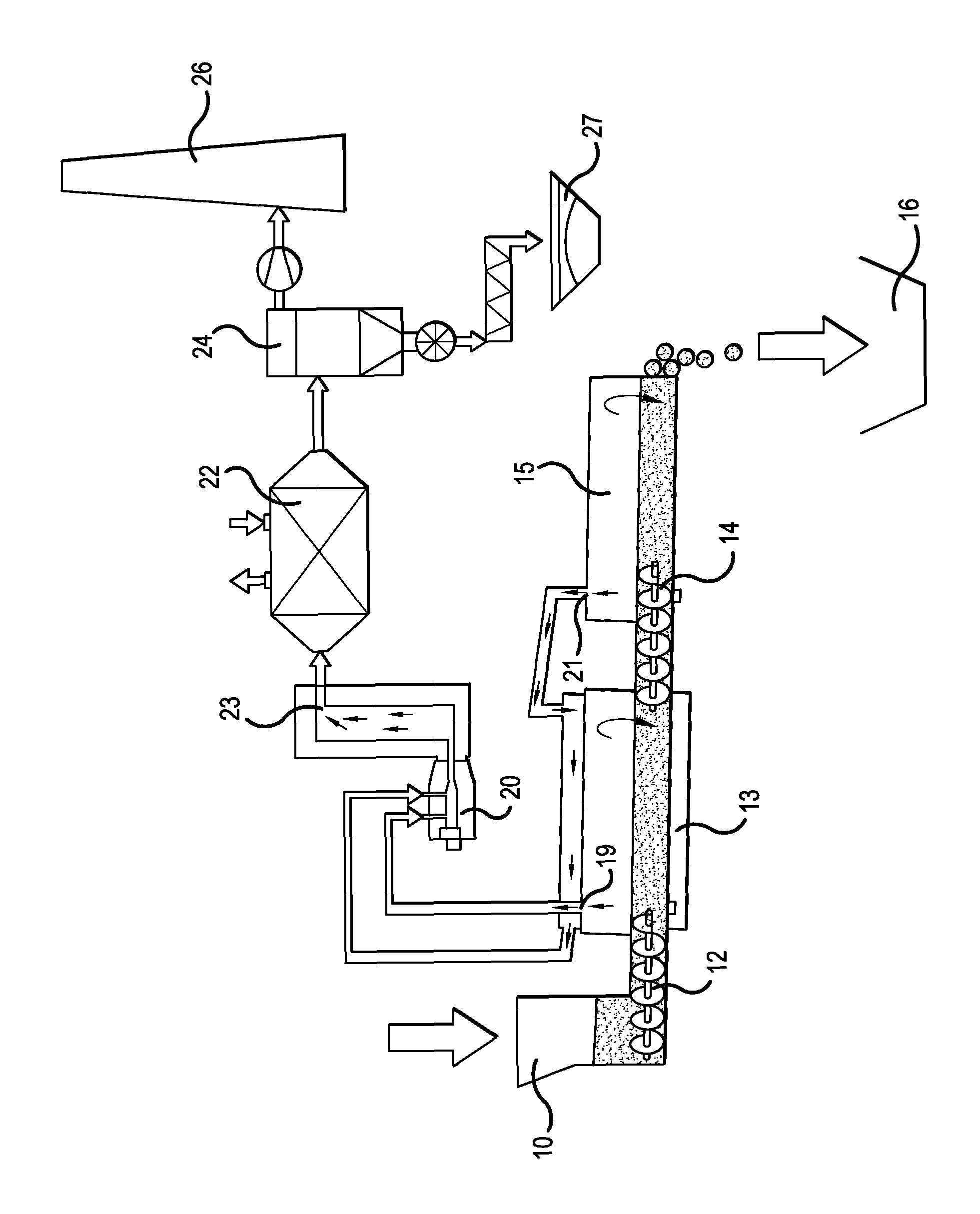Method for producing phosphates and phosphate-containing compounds, particularly alkaline earth phosphates, alkaline earth silicophosphates, or alkaline earth oxides
a technology of phosphate and phosphate-containing compounds, which is applied in the field of method for producing phosphates and phosphate-containing compounds, can solve the problems of unsatisfactory quantities and qualities, and shortening of phosphate and rising prices, and achieves high yield and purity, cost-effective and efficient production, and high yield and purity
- Summary
- Abstract
- Description
- Claims
- Application Information
AI Technical Summary
Benefits of technology
Problems solved by technology
Method used
Image
Examples
example 1
[0038]Bones from slaughterhouse waste were treated at different temperatures (test variants V1, V2, V3) under reductive conditions in a first step (a). Samples from the same test variant were then combusted oxidatively in a second step (b) (test variants V1.1, V2.2, V3.1). For each test variant, the phosphate solubility was determined after the reductive treatment and oxidative secondary combustion.
[0039]It becomes evident thereby that the amount of mineral acid-soluble phosphate can be increased by the downstream connection of the oxidative secondary combustion step (step (b)).
[0040]The phosphate solubilities after reductive treatment of meat bones at different temperatures and oxidative secondary combustion are shown in Table 1. The test variants are shown according to the reductive and oxidative treatments.
[0041]
TABLE 1reductiveTest variantV1V2V3V4Temperature500° C.700° C.900° C.1100° C.Phosphate as P2O5 in%%%%Mineral acid-soluble phosphate30.033.634.433.7Phosphate soluble in 2%2...
example 2
[0045]The total carbon content (TC) after reductive treatment of meat bones at different temperatures or oxidative secondary combustion and the development of the contents of inorganic substances were determined based on the procedure described in Example 1. The individual test variants are listed in Table 2 according to the reductive and oxidative treatment.
[0046]
TABLE 2ReductiveTest variantV1V2V3V4Temperature500° C.700° C.900° C.1100° C.Total carbon and organicsubstances in%%%%Total carbon (TC)15.113.311.310.9Organic substance20.716.713.615.9oxidativeTest variantV1.1V2.1V3.1Temperature850° C.850° C.850° C.Total carbon and organic substances in%%%Total carbon (TC)0.61.21.5Organic substance0.50.80.8
[0047]It is clearly evident that after the oxidative secondary combustion the total carbon (TC) and the organic substance were converted almost totally into thermal energy. After the first process step (a), the residual carbon contents in the first phase varied between 10.9% at a temperat...
example 3
[0048]An advantage of the phosphate or the phosphate-containing compounds produced according to the invention is that the thus obtained phosphate compounds have only very low amounts of heavy metals. Naturally occurring phosphate sources are clearly contaminated with heavy metals, particularly with cadmium.
[0049]The heavy metal contents in solid material after reductive treatment of meat bones at different temperatures and oxidative secondary combustions in comparison with crude phosphates, as they are available in the resources obtainable so far, are contrasted in Table 3. Further, the allowable limits according to the German Fertilizer Regulations (Dün VO / 03) are shown.
[0050]
TABLE 3reductiveTest variantV1V2V3V4Temperature500° C.700° C.900° C.1100° C.Heavy metal contents inppmppmppmppmArsenicAsLeadPb2.771.961.902.50CadmiumCdMercuryHgThalliumTl0.7450.500.50oxidativeTest variantV1.1V2.1V3.1Temperature850° C.850° C.850° C.Heavy metal contents inppmppmppmArsenicAs2.61LeadPb2.98CadmiumC...
PUM
| Property | Measurement | Unit |
|---|---|---|
| temperatures | aaaaa | aaaaa |
| temperatures | aaaaa | aaaaa |
| temperature | aaaaa | aaaaa |
Abstract
Description
Claims
Application Information
 Login to View More
Login to View More - R&D
- Intellectual Property
- Life Sciences
- Materials
- Tech Scout
- Unparalleled Data Quality
- Higher Quality Content
- 60% Fewer Hallucinations
Browse by: Latest US Patents, China's latest patents, Technical Efficacy Thesaurus, Application Domain, Technology Topic, Popular Technical Reports.
© 2025 PatSnap. All rights reserved.Legal|Privacy policy|Modern Slavery Act Transparency Statement|Sitemap|About US| Contact US: help@patsnap.com


